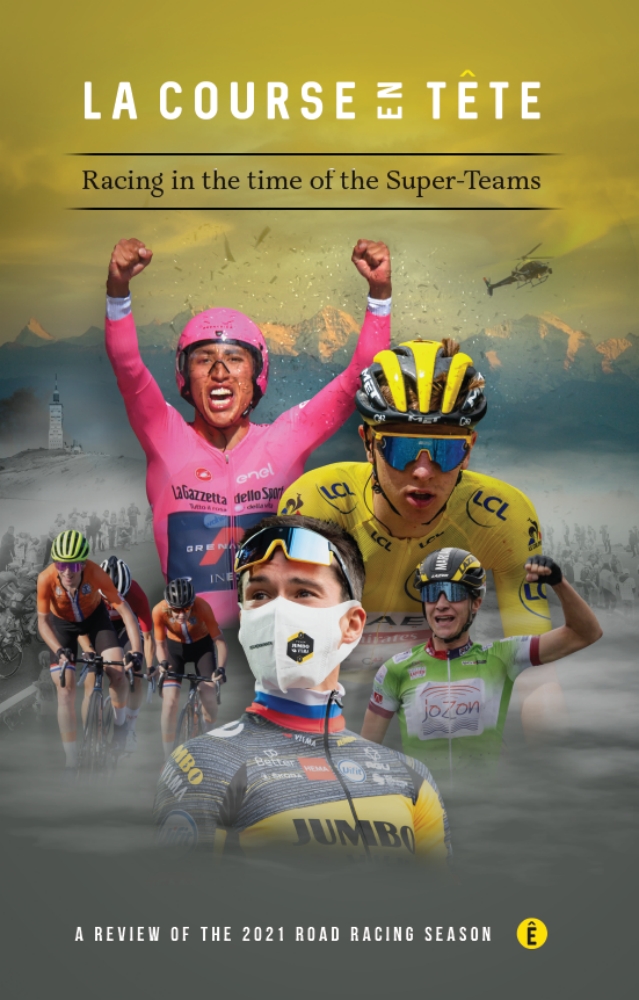
|
In 2021 the bike racing season returned to “normal” after the Covid-19 pandemic, but the racing kept up the same frenetic tempo that had stunned fans and media in 2020. There were new stars and old, unlikely comebacks and improbable upsets, drama, suspense and controversy. From the team behind the lacourseentete.com website, this is the must-have review of a rollercoaster year. OJ BORG NICK BULL PETER COSSINS WILLIAM FOTHERINGHAM AMY JONES MATT MORRIS SOPHIE SMITH JEREMY WHITTLE SWPIX.COM |
|
||||||||
| Meet The Team OJ Borg is the lacourseentete podcast specialist. A broadcaster of long standing who is currently with BBC Radio Two, when not out on his bike, OJ is a long-time cycling fan who was for many years the presenter of the BBC Radio podcast Bespoke. Nick Bull was drawn to cycling aged nine when the Rochester International Classic World Cup race took place on local roads in 1997. He joined Cycling Weekly and Cycle Sport as a reporter in 2011, and went on to become the magazines’ news editor. A regular contributor to BBC Radio 5 Live’s BeSpoke cycling show, he is also the PR & digital manager for the Tour of Britain and Women’s Tour races. He tweets @nickbull21. Peter Cossins devoured Phil Liggett’s reports in his dad’s newpspaper in the 70s and began work at Cycling Weekly as the magazine was preparing to launch Cycle Sport. He was procycling editor between 2006 and 2009 and currently specialises in writing books about the sport, having started as ghost writer on Stephen Roche’s Born to Ride. Twice an award winner for his books, Pete currently lives with his family in the Pyrenees, with an office overlooking the Prat d’Albis climb. William Fotheringham is lead cycling writer at The Guardian, having covered 26 Tours de France before retiring from front line duty in 2017. A former writer at Cycling Weekly, he helped launch Cycle Sport before founding the monthly procycling together with Jeremy Whittle. His best selling books include Put Me Back on My Bike: in search of Tom Simpson (2002), Fallen Angel: the Passion of Fausto Coppi (2008), and Merckx: Half-Man, Half-Bike (2012). Amy Jones is a freelance writer based in Girona, Spain. She primarily covers women’s cycling and is passionate about equality in sports. She contributes to Rouleur, Cyclingtips and cyclingnews.com and is also the editor of Women’s Cycling Weekly, a newletter covering the week’s news and content from the world of women’s cycling which can be found on Substack at mamilrepeller.substack.com. Matt Morris is a Shropshire based designer who started his own company in 2008 and has worked with cycling brands Orbea, Scott, Bianchi and Viner as well as a number of bluechip companies and the Lawn Tennis Association. Like many, he was drawn to cycling by Channel Four’s Tour coverage and currently enjoys thrashing his gravel bike around the lanes. Sophie Smith has been covering cycling since 2010, beginning with regional newspaper the Geelong Advertiser. She joined SBS in 2011, then moved to the UK to work freelance in 2012 before returning to Melbourne where she is a regular contributor to cycling magazines and websites; she has covered the Tour de France nine times. Jeremy Whittle began covering cycling in 1993, for Winning magazine, where his first assignment was interviewing a Texan upstart named Lance Armstrong. He has covered the Tour de France for 25 years, for the Times and currently for the Guardian, and joined William in launching procycling in 1999. His books Bad Blood and Racing Through the Dark (with David Millar) were shortlisted for the William Hill Sports Book of the Year. SWpix.com provide lacourseentete with photographs; they are an independent mainly sports specific picture agency, whose live and archive imagery appears in national and regional newspapers and across many digital platforms. The swpix.com archive holds nearly a million images; for more information contact Simon Wilkinson on simon@swpix.com |
||||||||||
Category Archives: Sport
Racing in the time of the Super-Teams
Mashies and Mash Tuns – A Whisky and Golf tour of England, Wales & Ireland
Andrew Brown
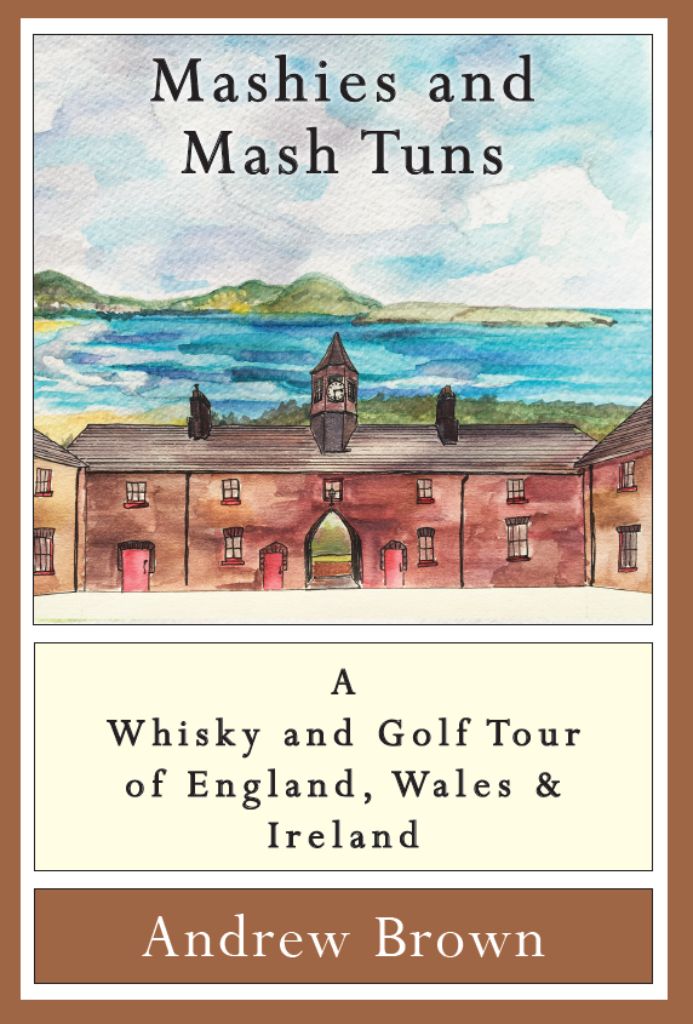
|
|
|
Mashies and Mash Tuns A Whisky and Golf tour of England, Wales & Ireland Following the success of Of Peats and Putts, this book explores how whisky and golf, ‘Scotland’s two gifts to the world’, have developed across the rest of the United Kingdom and Ireland. Again visiting nine distilleries and nine golf courses -four in both England and Ireland and one in Wales – the author discusses how these two great Scottish exports have fared outside of their native land. Many of the themes of the first book are developed; the importance of location, the role of landscape, the environment and people as well as the author’s contention that these two popular pastimes can be seen as metaphors for the vagaries of life. The author finds that there is always more to learn about both whisky and golf and starts to form a personal manifesto as to how each should evolve. Andrew Brown was born in Edinburgh, brought up in the Borders and educated at Loretto School in Musselburgh. After reading history at Cambridge University, he pursued a career in the food industry, marketing many famous brands such as Bisto, Hovis and Mr Kipling. |
|
Reviews of Peats and Putts... Charles Maclean, Whisky Writer and Master of the Quaich It is astonishing that until now nobody has sought to bring together Scotland’s two greatest gifts to the world – whisky and golf. This little book is a personal journey of discovery. In ten chapters, each devoted to a region or county – from Sutherland in the north to East Lothian in the south and Islay in the West - Andrew Brown reviews a golf course and a locally made malt whisky. As he travels from one place to the next he ponders how and why these two products developed in Scotland and what it is about the country, its landscape and people, which connects them. As he writes: “Both whisky and golf are more than just a drink and a sport; both can be seen as metaphors for the vagaries of life itself.” Indeed! Golf Quarterly Review June 2018 This is a delightful, well-written little book – part travel guide, part history, part personal philosophy, and part unwitting nationalist tract (what better way, after all, to celebrate Scottish distinctiveness than through writing about its two most famous exports?). It takes the form of a tour of nine regions of the country, in search of the author’s favourite distilleries and favourite golf courses along the way. I can imagine peripatetic golfers with a fondness for an evening dram, or whisky aficionados with a set of clubs in the boot of their car, packing this little volume and reading up on pleasures planned for the following day. It will be equally enjoyable, though, with a glass of single malt to hand in the privacy of your own home. What gives the journey special significance is the author’s playful exploration of the similarities and connections between whisky and golf. Andrew Brown, a native Scot who spent most of his career in the food industry south of the border, suggests that location, history and architecture are crucial to the two experiences. History, for instance, is an important part of the narrative that accompanies both playing and drinking. Just as we like to know the origins, ownership and social impact of a particular whisky brand (notwithstanding the marketing hype), so hearing about how and when a golf club was founded, who played there and who designed and changed it invariably enriches a round of golf. Perhaps design is the most striking common factor given the simple, limited and seemingly unpromising ingredients that course architects and whisky manufacturers both start with. All golf courses are hewn out of sand and soil, while the essential elements of any whisky are also the same: only malted barley, water and yeast are permitted in anything that calls itself Scotch. What produces so many different and unique variations of the spirit is everything from the distilling process to the local landscape, whether it be the taste of the water, the quality of the soil, or the extent of the annual rainfall. In the case of golf it’s the eye and skill to use nature to best effect. Each chapter describes the idiosyncrasies of a favourite course and distillery. The golf choices are far from predictable – Brora rather than Dornoch in Sutherland, Kilspindie rather than Gullane, Luffness New or Muirfield in East Lothian, the Eden rather than the Old Course in Fife. These reflect not just a conscious decision to stay away from Championship venues but those the author considers best meet his three criteria for selection: a tough but enjoyable (and affordable) test for all levels of golfer, delightful surroundings and a welcoming clubhouse. There is an equally diverse spread of distilleries, old and new, large and small, ranging from multinational owned enterprises such as Glenmorangie to independent Edradour in Perthshire (20,000 cases of which went down off the island of Eriskay in 1941, inspiring Compton Mackenzie’s wonderful book Whisky Galore). Wisely, the author does not take prior knowledge for granted though spelling out a three-shotter for golfers or mash tuns for devoted whisky drinkers may mildly irritate some. I liked his many diversions - musings on what makes a good golf hole and a good malt, for example, thumbnail sketches of important golf designers like James Braid and Harry Colt, and reflections on the history and practise of naming golf holes. There are plenty of surprises (at least to this non-expert whisky drinker). Did you know that eight of the world’s top ten whisky brands are Indian, while the country that consumes the most whisky on a per capital basis is France (the United States being second and the UK third)? Tim Dickson Editor Golf Quarterly Simon Marquis, Cornwall Of Peats and Putts will appeal to anyone who enjoys golf and/or malt whisky. Andrew Brown is an enthusiastic amateur of both and his enjoyment shines through this delightful scamper across nine of Scotland’s finest golf holes, and a rather more leisurely trundle around nine of its distilleries. The real pleasure of this short volume though is the author’s drawing of nice parallels between these twin pleasures and life itself. Golf has its ups and downs as do our lives, some of them at least, perhaps smoothed away by a late evening dram or two! The book is a pleasure in itself. I eagerly await volume two. James Holder - Author of The Great War's Sporting Casualties Andrew Brown's second book, Mashies and Mash Tuns, has all the same charm as his first book. He describes the golf courses highlighted in his book leaving you wanting to play them and writes about whiskey in a way which, because of my own aversion to whisky (and whiskey), leaves me regretting I cannot taste them. And not content with just writing about golf courses and distilleries, he expresses in no uncertain terms how he thinks golf should be played, views I share but views which I fear too many golfers choose to ignore. |
|
Books by Andrew Brown... Of Peats and Putts Mashies and Mash Tuns Of Peats and Putts - Continental |
Atlantic Lady – The oldest woman to row any ocean
Dianne Carrington
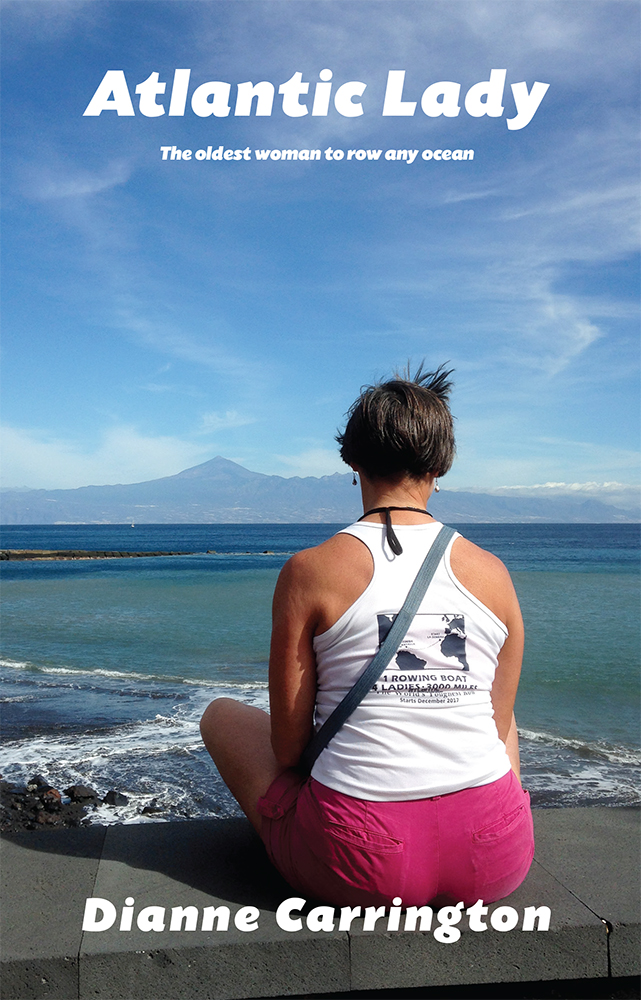
|
In the spring of 2016, recovering from burn-out and depression after many years in the NHS, Dianne Carrington was ready for a new challenge. So when the phone rang and an old friend asked if she was ready to row the Atlantic in the Talisker Whisky Challenge, how could she say no? She had always had an interest in outdoor activities and a big project like this was just what she needed to get back on track. Or was it? To row the Atlantic at any age is an undertaking beyond most of us but for a team of women in their sixties, and that was the idea that her friend was suggesting, it seemed almost impossible. After all, the Talisker Whisky Challenge is one of the most demanding competitions on this planet. |
£9.99 (+ £2 postage) Available on Amazon | ||||||||
| At twenty-one I was in the Olympic squad for white-water slalom canoeing but left to take up my career. I taught outdoor pursuits for ten years by the sea. I've always loved the sea and canoed on it almost daily, challenging my limits. Then learnt that I couldn't have children and I trained as a nurse, working my way up the career ladder in the NHS. At fifty-five I had to end my career prematurely after I burnt out, having given more than 100%. I lost confidence and my body was racked with pain; I was in a bad place. A team of wonderful people helped me get well again and I wanted to give something back. What better way than to raise money for charity and go back to the oceans that I love? Life is too short to not live it to the full. I set out to gather a lovely team of ladies as close to my age as possible who would be passionate about rowing across the Atlantic with me. I wanted to inspire women and show them that we are never too old to do what we want to do. I wanted to help them embrace the courage to leave sight of the shore and to accomplish great things.” | ||||||||||
|
Reviews... |
The Great War’s Sporting Casualties:International sportsmen who were killed in the Great War
James Holder
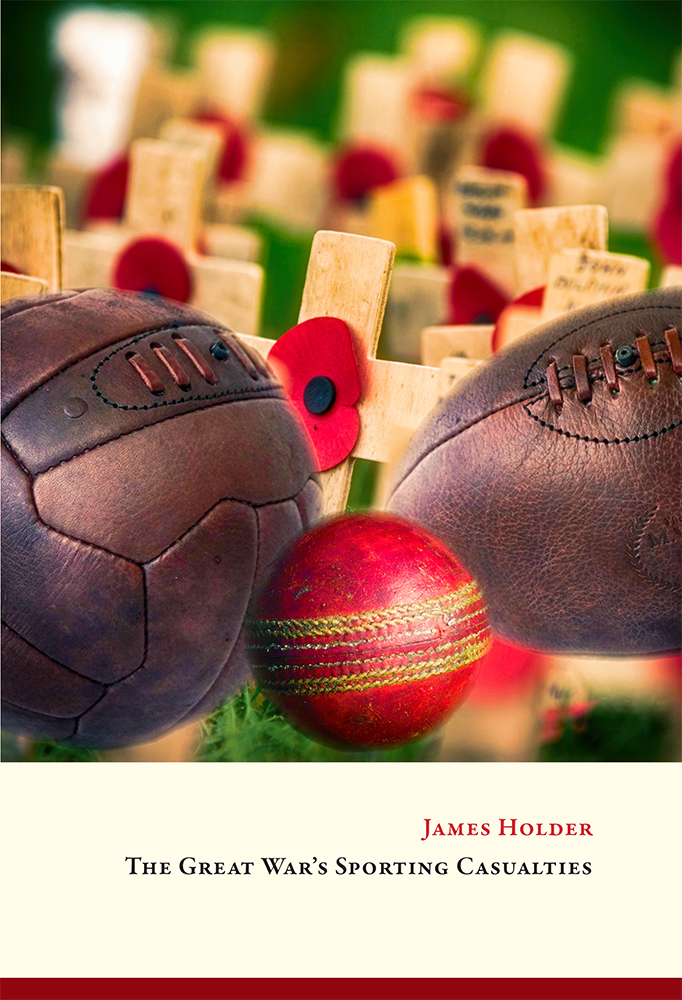
|
The Great War claimed the lives of many professional and amateur sportsmen, including over three hundred who had represented their countries in one sport or another. The Great War’s Sporting Casualties contains details of the sporting achievements and, where known, the circumstances of the deaths of those international sportsmen who were killed in the War or died as a result of injuries sustained in the War. It also contains details of nine other sportsmen who were killed in the War but who, although they did not represent their countries, did achieve something exceptional either in sport or in war. Included amongst those listed are twenty-two Olympic gold medallists, twelve who captained their country at rugby, two who won the Tour de France and one who was a four-times Wimbledon champion. Also included are the three international sportsmen who won the Victoria Cross, one of whom was the only person to win two Victoria Crosses for deeds during the War and the fifteen who won the Military Cross. |
£25.00 (+ £3 postage) Available from Amazon | ||||||||
| James Holder was born in Somerset and, after reading law at Cambridge University, practised as a solicitor; he now works as a consultant. He is passionate about sport and has always taken an interest in family history much of which involves relations who were fortunate enough to survive the Great War. He and his wife have four children and one grandchild and live in Oxfordshire. | ||||||||||
|
Reviews... Andrew Brown, Oxfordshire This is an impressively comprehensive guide to how the Great War led to the loss of so many top level sportsmen. While that in itself is not surprising –it led of course to the deaths of people from all walks of life-it is a stark reminder as to how many young, talented people were lost in the prime of their lives. The book focuses on international team sports - football, rugby and cricket - and Olympians and it is interesting to see the different rates of losses; for example, the worst hit proportionally were rugby players and Scottish rugby players in particular. The author surmises that this could be because a higher proportion of rugby players were privately educated and as a result officers who led from the front. As well as the many fascinating and tragic individual stories in the main section of the book, I also enjoyed the appendices. One gives useful summary accounts of the many different Great War battles while one also details the losses by the internationals which they played; of the 30 players who participated in the January 1913 Scotland versus France rugby international, 14 were to die in the subsequent conflict. |
Of Peats and Putts – A whisky and golf tour of Scotland
Andrew Brown
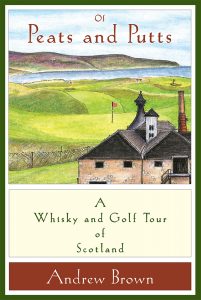
|
In this book, one man returns to rediscover his native Scotland through its most famous exports; whisky and golf. He finds that both derive from what makes Scotland great – its land and its people – and that the very earth contributes to the essential ‘architecture’ of both. With an engaging and philosophical approach, the author creates a tour of Scotland, offering insight into the industries behind whisky and golf, as well as the history and experience of both. Matching distilleries and courses by region, he discovers some hidden gems and some unique experiences, concluding that both pursuits offer more than the sum of their parts. Both simple yet complicated, these two great representatives of Scotland offer insight into this unique country, its landscape, its people and beyond that life itself. |
UK Only Available from Amazon | ||||||||
|
Andrew Brown was born in Edinburgh, brought up in the Borders and educated at Loretto School in Musselburgh. After reading history at Cambridge University, he pursued a career in the food industry, marketing many famous brands such as Bisto, Hovis and Mr Kipling. He has three grown-up children, is now retired and, outside of his regular visits to Scotland, lives in the Chilterns. Apart from playing golf he is an enthusiastic dog walker, a very average tennis player and a novice gardener. |
||||||||||
|
Reviews... Charles Maclean, Whisky Writer and Master of the Quaich It is astonishing that until now nobody has sought to bring together Scotland’s two greatest gifts to the world – whisky and golf. This little book is a personal journey of discovery. In ten chapters, each devoted to a region or county – from Sutherland in the north to East Lothian in the south and Islay in the West - Andrew Brown reviews a golf course and a locally made malt whisky. As he travels from one place to the next he ponders how and why these two products developed in Scotland and what it is about the country, its landscape and people, which connects them. As he writes: “Both whisky and golf are more than just a drink and a sport; both can be seen as metaphors for the vagaries of life itself.” Indeed! Golf Quarterly Review June 2018 This is a delightful, well-written little book – part travel guide, part history, part personal philosophy, and part unwitting nationalist tract (what better way, after all, to celebrate Scottish distinctiveness than through writing about its two most famous exports?). It takes the form of a tour of nine regions of the country, in search of the author’s favourite distilleries and favourite golf courses along the way. I can imagine peripatetic golfers with a fondness for an evening dram, or whisky aficionados with a set of clubs in the boot of their car, packing this little volume and reading up on pleasures planned for the following day. It will be equally enjoyable, though, with a glass of single malt to hand in the privacy of your own home. What gives the journey special significance is the author’s playful exploration of the similarities and connections between whisky and golf. Andrew Brown, a native Scot who spent most of his career in the food industry south of the border, suggests that location, history and architecture are crucial to the two experiences. History, for instance, is an important part of the narrative that accompanies both playing and drinking. Just as we like to know the origins, ownership and social impact of a particular whisky brand (notwithstanding the marketing hype), so hearing about how and when a golf club was founded, who played there and who designed and changed it invariably enriches a round of golf. Perhaps design is the most striking common factor given the simple, limited and seemingly unpromising ingredients that course architects and whisky manufacturers both start with. All golf courses are hewn out of sand and soil, while the essential elements of any whisky are also the same: only malted barley, water and yeast are permitted in anything that calls itself Scotch. What produces so many different and unique variations of the spirit is everything from the distilling process to the local landscape, whether it be the taste of the water, the quality of the soil, or the extent of the annual rainfall. In the case of golf it’s the eye and skill to use nature to best effect. Each chapter describes the idiosyncrasies of a favourite course and distillery. The golf choices are far from predictable – Brora rather than Dornoch in Sutherland, Kilspindie rather than Gullane, Luffness New or Muirfield in East Lothian, the Eden rather than the Old Course in Fife. These reflect not just a conscious decision to stay away from Championship venues but those the author considers best meet his three criteria for selection: a tough but enjoyable (and affordable) test for all levels of golfer, delightful surroundings and a welcoming clubhouse. There is an equally diverse spread of distilleries, old and new, large and small, ranging from multinational owned enterprises such as Glenmorangie to independent Edradour in Perthshire (20,000 cases of which went down off the island of Eriskay in 1941, inspiring Compton Mackenzie’s wonderful book Whisky Galore). Wisely, the author does not take prior knowledge for granted though spelling out a three-shotter for golfers or mash tuns for devoted whisky drinkers may mildly irritate some. I liked his many diversions - musings on what makes a good golf hole and a good malt, for example, thumbnail sketches of important golf designers like James Braid and Harry Colt, and reflections on the history and practise of naming golf holes. There are plenty of surprises (at least to this non-expert whisky drinker). Did you know that eight of the world’s top ten whisky brands are Indian, while the country that consumes the most whisky on a per capital basis is France (the United States being second and the UK third)? Tim Dickson Editor Golf Quarterly Simon Marquis, Cornwall Of Peats and Putts will appeal to anyone who enjoys golf and/or malt whisky. Andrew Brown is an enthusiastic amateur of both and his enjoyment shines through this delightful scamper across nine of Scotland’s finest golf holes, and a rather more leisurely trundle around nine of its distilleries. The real pleasure of this short volume though is the author’s drawing of nice parallels between these twin pleasures and life itself. Golf has its ups and downs as do our lives, some of them at least, perhaps smoothed away by a late evening dram or two! The book is a pleasure in itself. I eagerly await volume two. |
In 1980, Boxer Walker was voted the best scrum half in the world
Mike Gardner
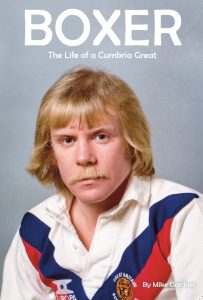
|
|
£15.00 (+ £3 postage) |
||||||||
|
|
||||||||||
Rugby League Express
In a warts and all account, Gardner doesn't shy away from the fact that Boxer Walker could mix it with the best, almost a prerequisite of a scrum half's armoury in an era when every number seven was a target for enforcers. The award-winning author has written a superb account of a glorious career and this book is a must-read for every rugby league fan.
Adrian Durham, Talksport presenter, journalist and author
Mike Gardner paints a clear and poignant picture of Boxer as he is today, wonderfully written. Overall I enjoyed the description of old school rugby league, as well as the spirit and strength of the game in Cumbria. The photographs are a joy - plenty of them, and capturing an era and an area. The picture of the steps early in the book is awesome! Congratulations, loved it! The author should feel very proud
Rugby League Journal
It is all part of Mike Gardner's skills as a writer in taking us behind the scenes to the 'dark and mysterious' areas of rugby league that the fan doesn't see but only those who played the game can reveal. His descriptive talents and way with words at times present the story in an novel-esque style
Skiing With Demons
Chris Tomlinson
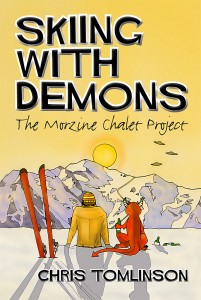
|
|
and Amazon Kindle Books |
||||||||
|
|
||||||||||
Reader Reviews...
An excellent read!
A great book. I read it all in one go, so eager was I to follow the story. It is funny - I had a few laugh out loud moments which are unusual for me - and poignant too. The author is disarmingly honest about his exploits, the end of his marriage and his struggle to get back on his feet. I passed it onto my 17 year old son who also read it in one go and loved it and to my 80 year old mother-in-law who is reading it now. So, a book for everyone and a great little stocking filler!
Witty page turner of how one man started living the dream of many avid holiday skiers.
A great book. I read it all in one go, so eager was I to follow the story. It is funny - I had a few laugh out loud moments which are unusual for me - and poignant too. The author is disarmingly honest about his exploits, the end of his marriage and his struggle to get back on his feet. I passed it onto my 17 year old son who also read it in one go and loved it and to my 80 year old mother-in-law who is reading it now. So, a book for everyone and a great little stocking filler!